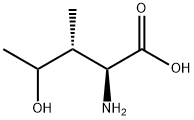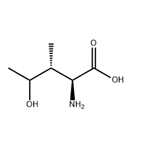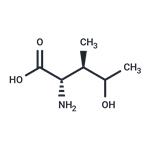4-Hydroxyisoleucine (50 mg/kg, p.o., daily, 8 weeks) inhibits the increase in serum glucose in the fructose-fed rat model of metabolic syndrome[1].
4-Hydroxyisoleucine (200 mg/kg, p.o., 8 weeks) improves dyslipidemia and reduces lipid ectopic accumulation in C57BL/6 mice[4].
4-Hydroxyisoleucine (200 mg/kg, p.o., 8 weeks) decreases the expression of proinflammatory cytokine (IL-6, PAI-1, IL-1β, NF-κB, TNF-α, and MCP-1) and the proportion of proinflammatory M1 macrophages in C57BL/6 mice[4].
4-Hydroxyisoleucine (50 mg/kg, i.g., daily, 14 days) restores high levels of lipids (cholesterol, HDL, LDL and triglycerides) and uric acid in type 1 diabetic rat to that of nondiabetic controls level[5].
| Animal Model: | Fructose-fed rat[1] |
| Dosage: | 50 mg/kg |
| Administration: | Oral gavage (p.o.), daily, 8 weeks |
| Result: | Decreased the levels of glucose and ALT.
Reduced 80% of fructosehe-induced AST release to 151 ± 45 U/mL.
|
| Animal Model: | Type 2 diabetic rat[1] |
| Dosage: | 50 mg/kg |
| Administration: | i.g., daily, 14 days |
| Result: | Restored the level of HDL-cholesterol to levels comparable to controls.
|
| Animal Model: | Male C57BL/6 mice[4] |
| Dosage: | 50-200 mg/kg |
| Administration: | Oral gavage (p.o.), 8 weeks |
| Result: | Decreases the body weights of mice in a dose-dependent manner.
Decreased blood glucose levels and fasting plasma insulin content in mice.
Decreased the expression of TLR4, inhibited the phosphorylation of JNK, and increased the production of IκB-α.
|
| Animal Model: | Type 1 diabetic rat[5] |
| Dosage: | 50 mg/kg |
| Administration: | i.g., daily, 14 days |
| Result: | Improved appearance and heavy ocular vascularization.
Reduced the blood glucose from 500 mg/dl to 330 mg/dl.
Decreased the levels of lipid markers (TG, LDL and HDL) and uric acid.
Didn’t increase the level of inculin compared with untreated diabetic controls.
|



